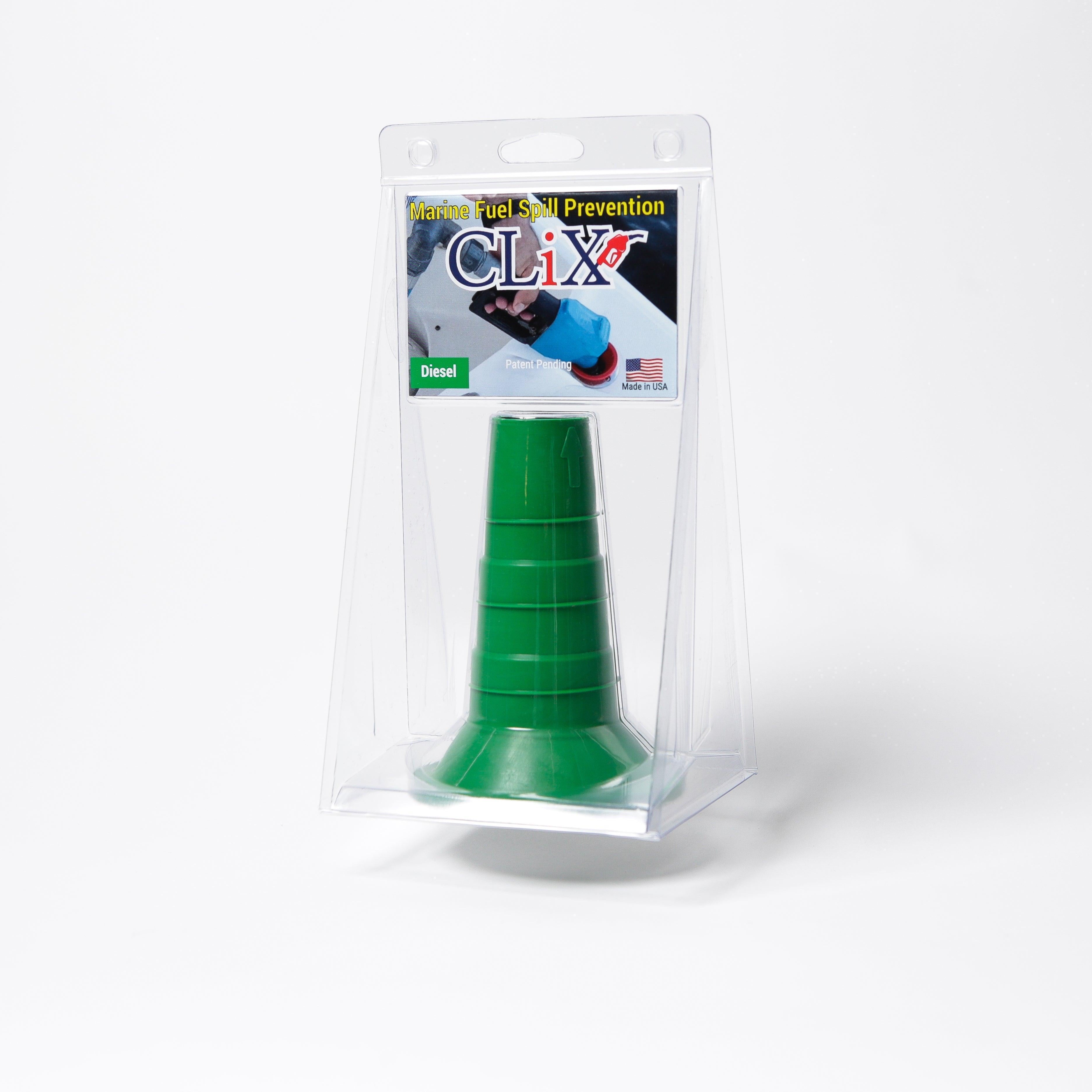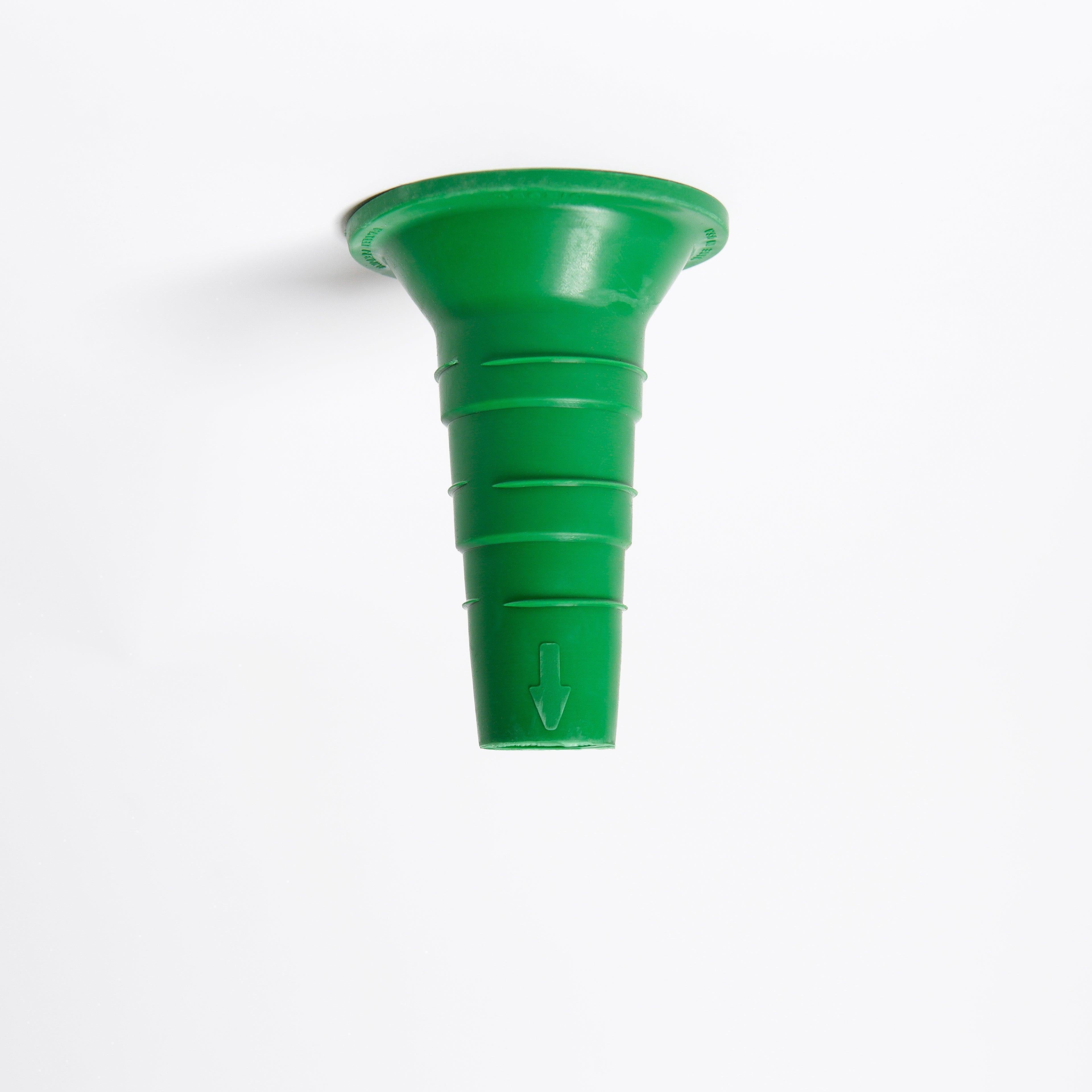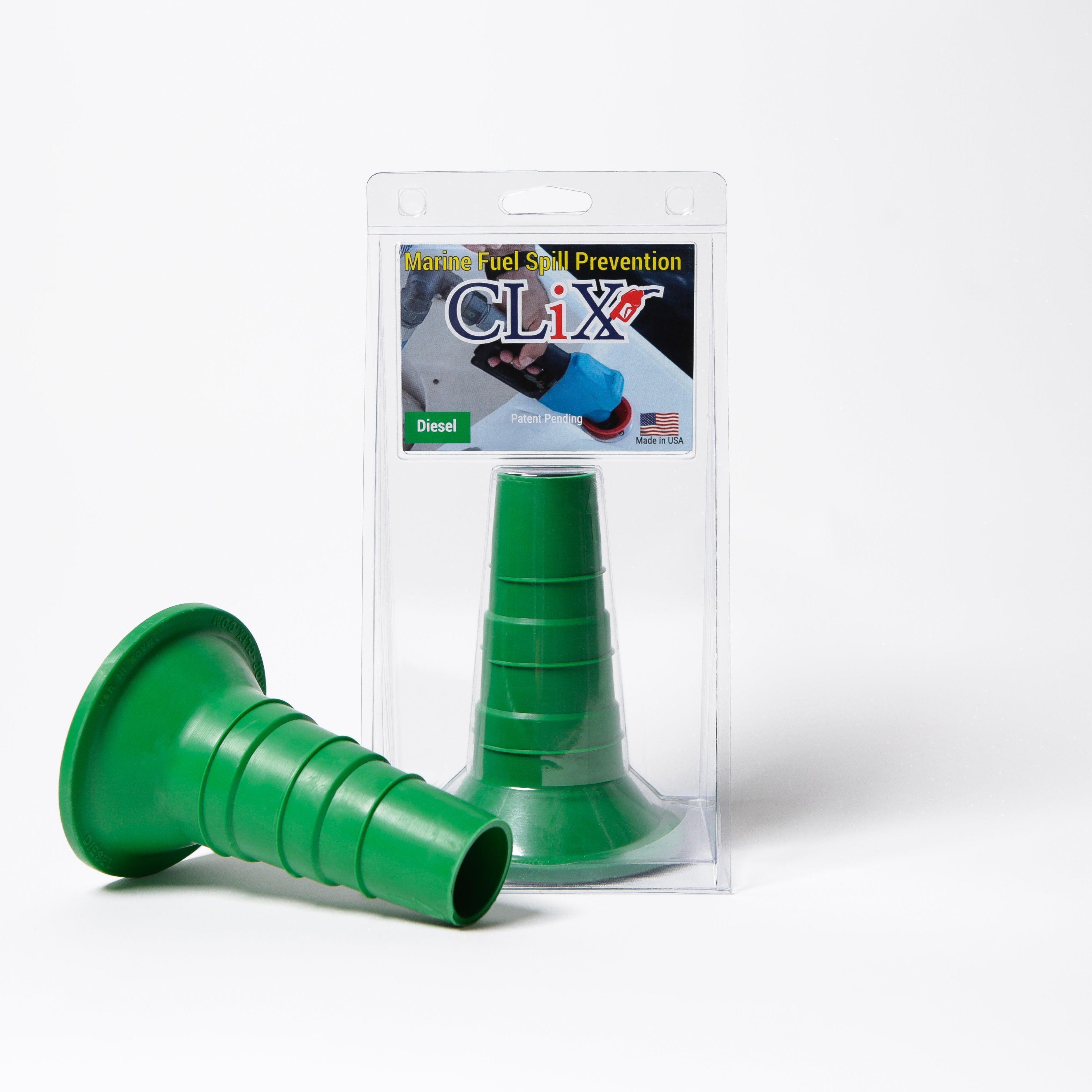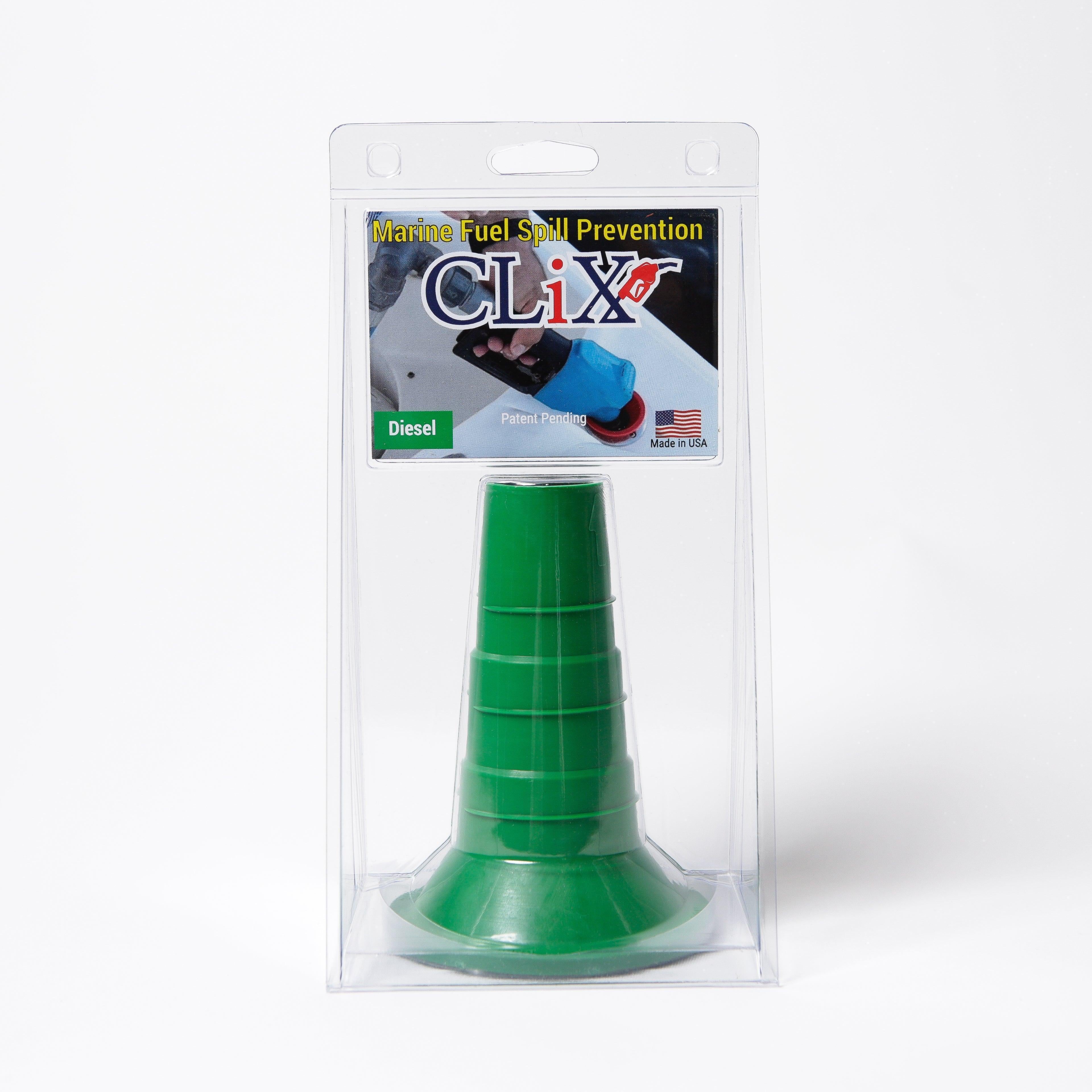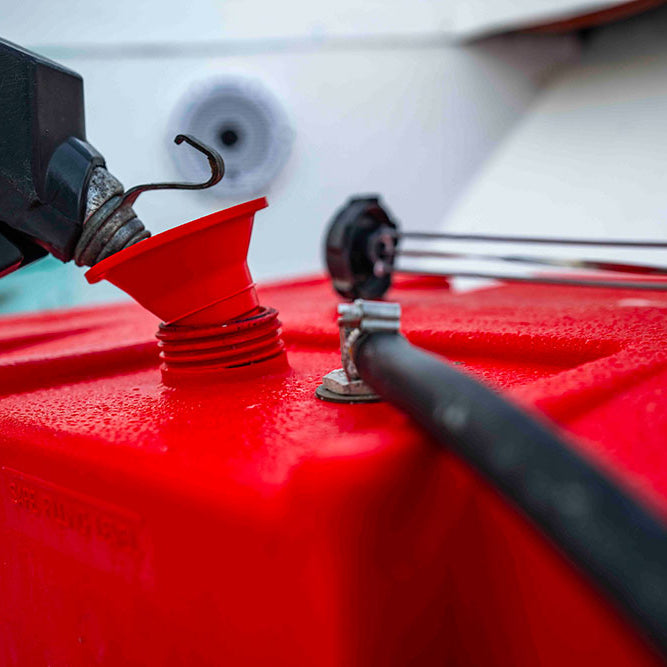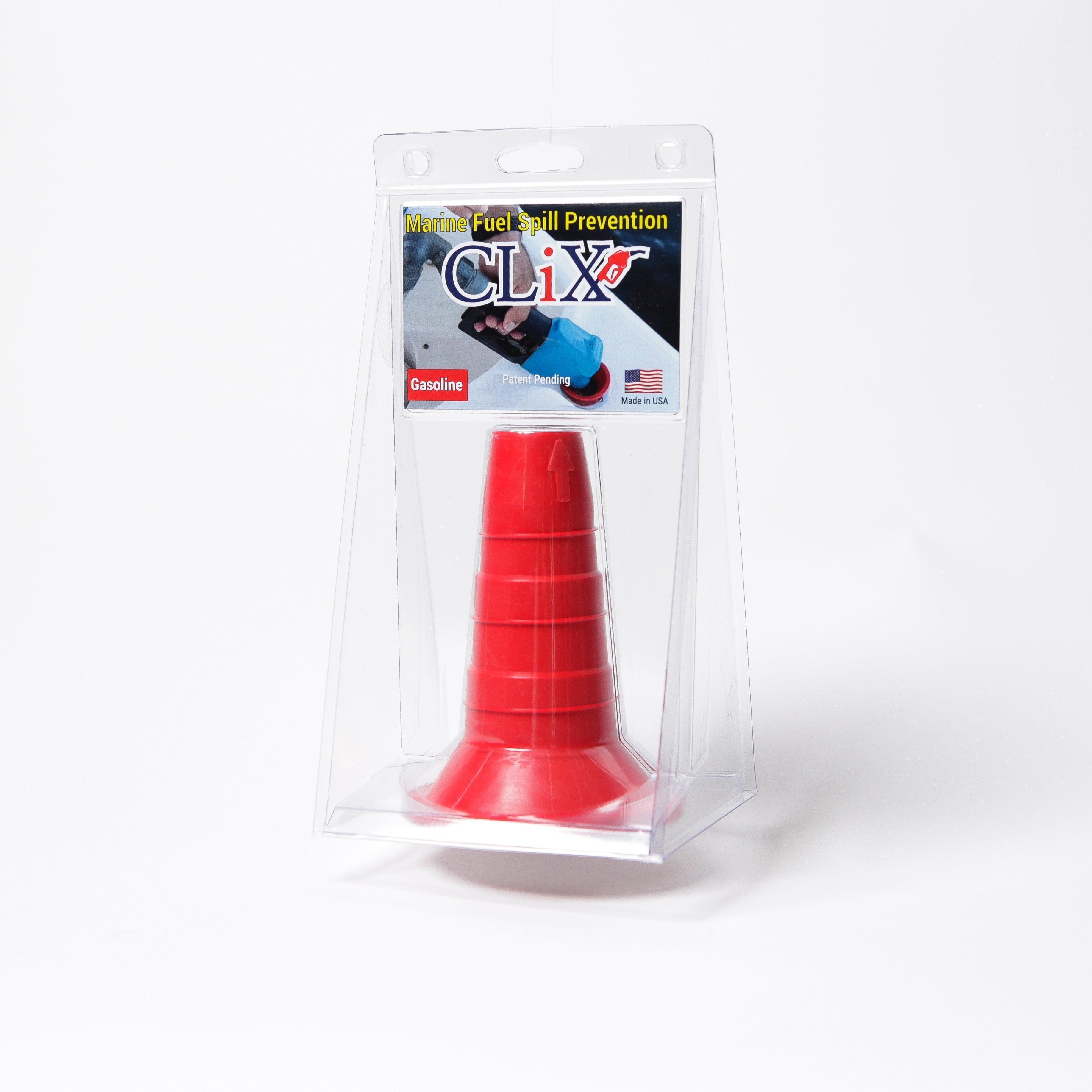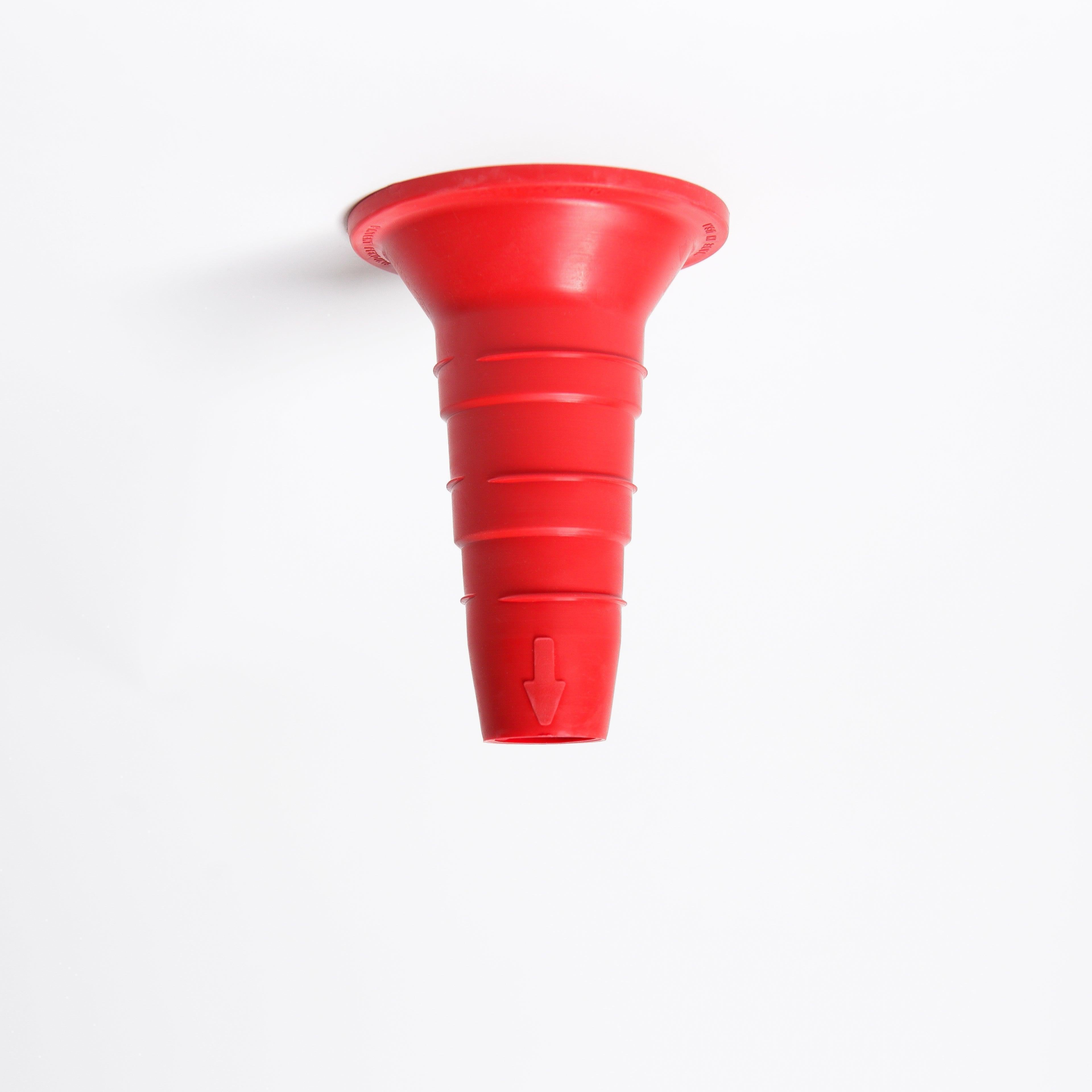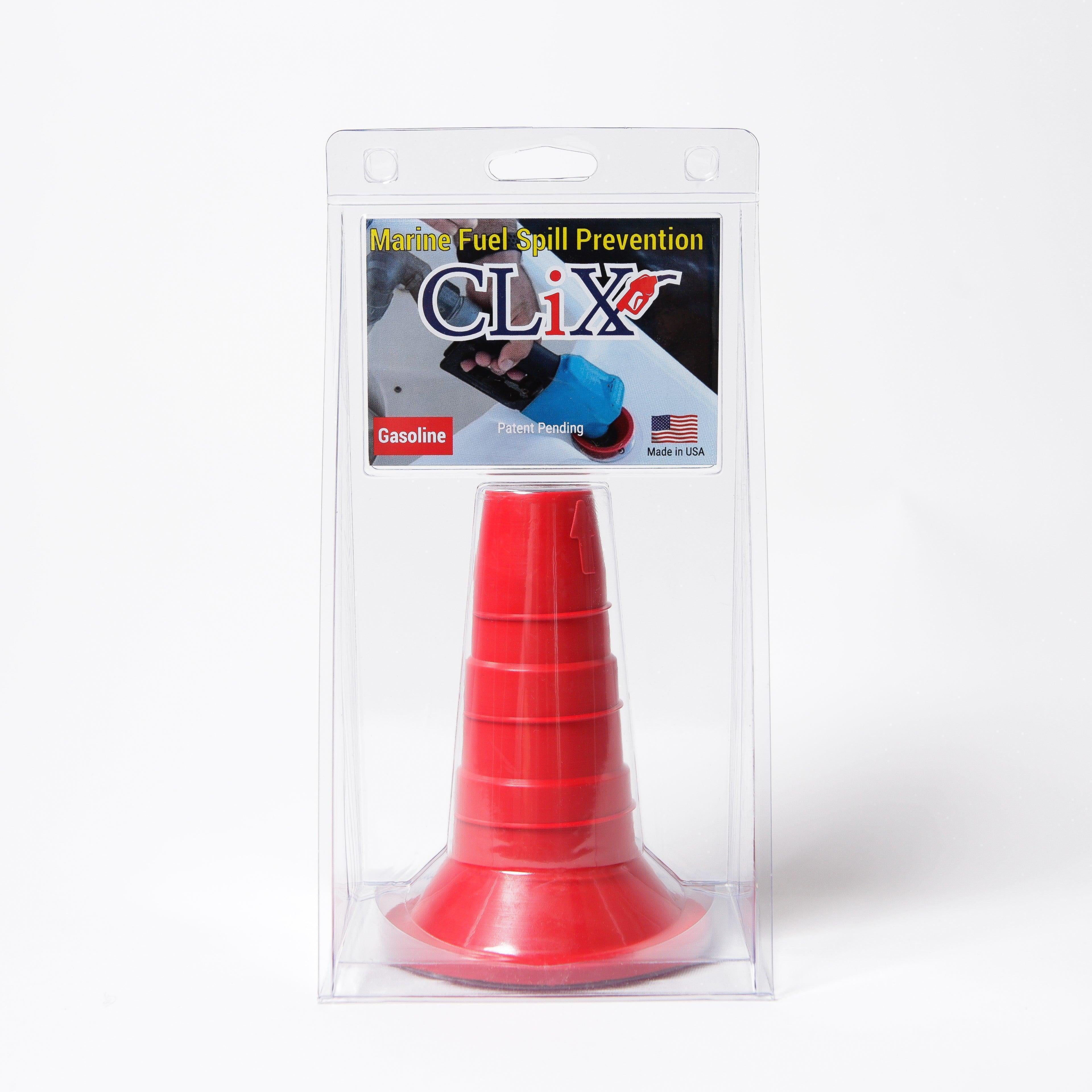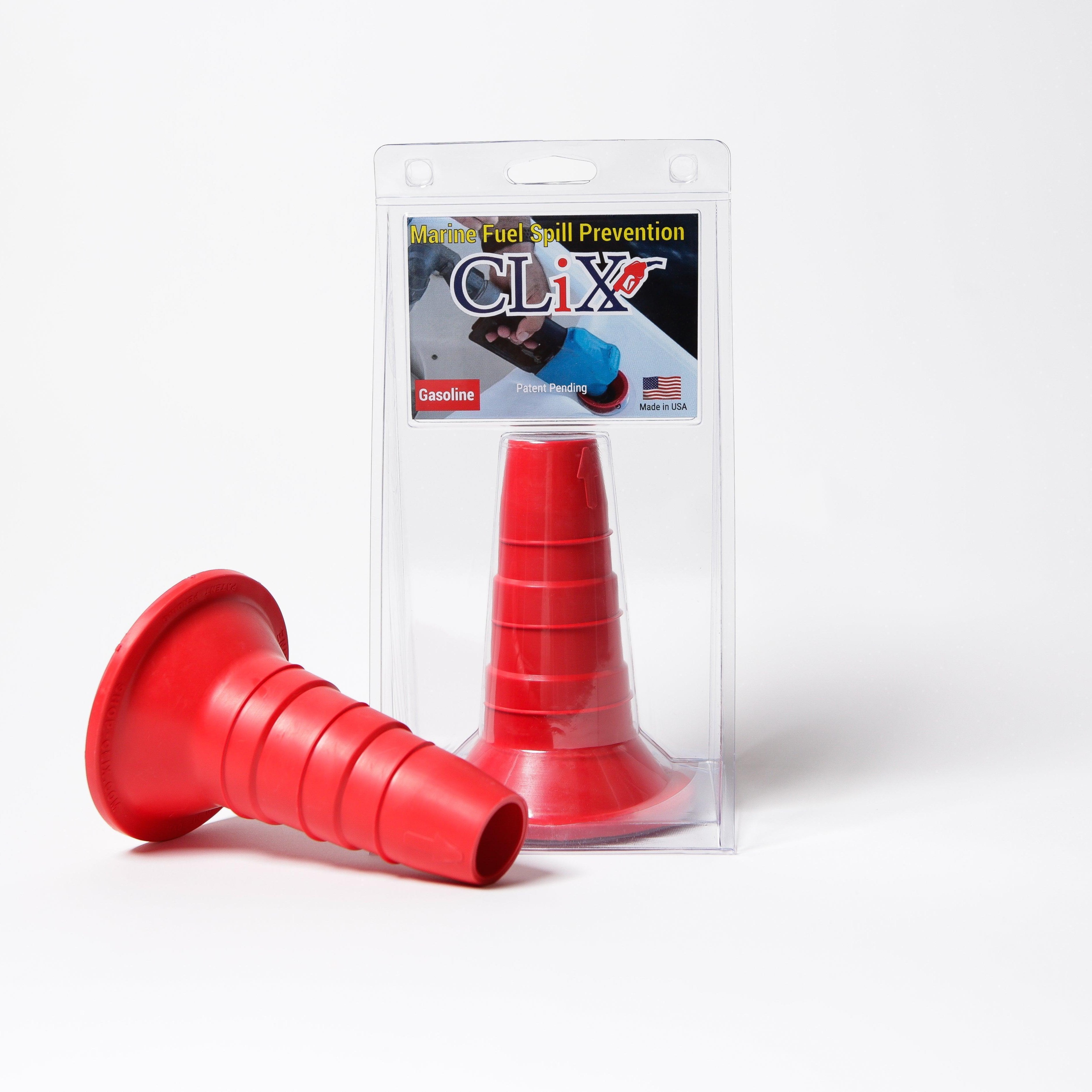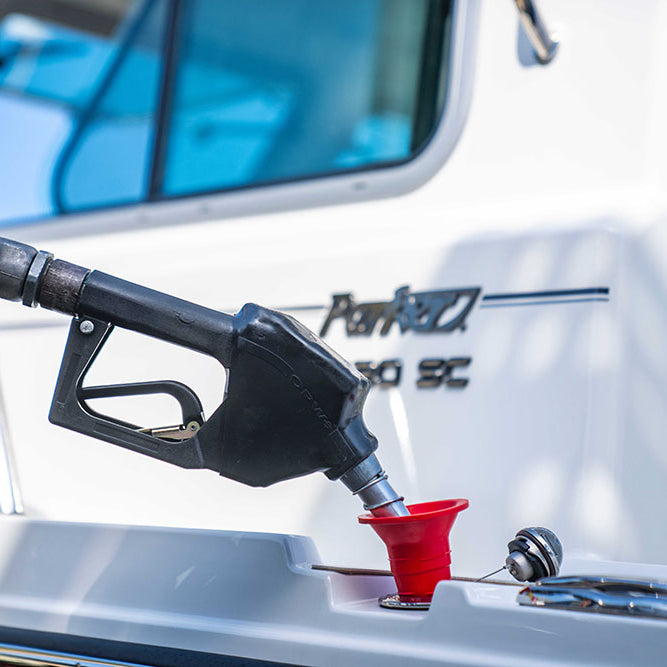Understanding Your Boat Fuel System's Critical Role
The boat fuel system is the lifeline that keeps you moving on the water, but it's much more intricate than many boaters think. Imagine it as your boat’s cardiovascular system; every single part has to work together perfectly to supply clean fuel at the correct pressure and volume. If this system breaks down, you’re not just dealing with an inconvenience—you’re stranded. A sputtering engine miles from the nearest dock is often the first and only sign that a serious problem is underway.
This system's reliability is crucial, especially when you consider the tough conditions it operates in. Unlike the sheltered fuel system in a car, a marine setup is constantly under attack from unique challenges that would ruin automotive parts in just a few weeks.
Why Marine Fuel Systems Are Different
Saltwater corrosion, the constant shock from waves, sharp temperature changes, and pervasive moisture create a very demanding environment. This requires a level of engineering far beyond what's needed for a typical land-based vehicle. The components aren't just picked from a catalog; they are specifically designed to survive at sea.
For example, a boat fuel system must use special, corrosion-resistant materials for its tanks, lines, and fittings. It also needs better filtration to handle the water that always seems to find its way into the fuel, a problem that can quickly cause engine damage. These features aren't just nice-to-haves; they are essential for safe and reliable operation.
The specialized market for this equipment is huge. Marine fuel is the power behind an industry that supports over 80% of global trade by sea. By 2025, the worldwide marine fuel market is expected to reach about US$140.6 billion and is forecast to grow to US$171.5 billion by 2030. You can learn more about these market trends from Knowledge Sourcing Intelligence. This massive economic scale highlights how vital dependable fuel delivery is, from giant cargo ships down to your weekend fishing boat.
From Information to Essential Knowledge
Learning the basics of your boat fuel system turns abstract facts into practical, life-saving skills. It helps you notice small warning signs—like a slight hesitation from the engine or a faint smell of fuel—before they become full-blown emergencies. Knowing why a fuel-water separator is so important, or how a blocked vent can starve your engine of fuel, gives you the power to perform preventive maintenance and troubleshoot with confidence.
This knowledge isn't just about avoiding expensive repairs; it's about making sure you and your passengers are safe every time you leave the dock. It’s the difference between making a quick fix at the marina and facing a dangerous situation in open water. In the sections that follow, we'll examine each component to help you build that crucial understanding.
Essential Components That Make Your System Work
Think of your boat fuel system like a well-rehearsed orchestra. Every single component, from the tank to the engine, has a critical part to play. If one instrument is out of tune, the whole performance suffers. Understanding what each part does is the key to preventing problems before they can ruin a day on the water.
This infographic shows the three main categories of modern boat fuel systems.
As you can see, systems are first divided between gasoline and diesel engines. Gasoline systems are then split further into older carbureted designs and modern fuel-injected ones. While many core components are similar, the way fuel is delivered changes a lot between these types, which impacts both performance and maintenance.
From the Tank to the Engine: Key Parts
Let's follow the journey of fuel as it travels from the tank to your engine. Each component in this chain is a potential point of failure if it's not the right type or hasn't been properly maintained. A quality boat fuel system is an interconnected network where one small problem can quickly lead to major issues.
-
Fuel Tank: This is much more than just a box to hold fuel; it's your first line of defense against contamination. Marine fuel tanks are typically built from aluminum, stainless steel, or cross-linked polyethylene—materials chosen specifically to resist corrosion from saltwater and degradation from ethanol-blended fuels. They also require a venting system to manage pressure changes as fuel is used or expands in the heat.
-
Fuel Lines: These are the arteries of the system, and not just any hose will do. The U.S. Coast Guard has strict rules for fuel lines based on their location. For instance, lines within an enclosed engine space (Type A1) must be fire-resistant for at least 2.5 minutes. This rule exists to prevent a small fire from becoming a catastrophe. Lines in open areas (Type B1) have less demanding requirements, but using the wrong type anywhere is a serious safety hazard.
-
Fuel-Water Separator: This is one of the most vital parts of the entire system. Water is a constant enemy, finding its way into your tank through vents or from condensation. The separator's job is to trap this water before it can reach the engine, where it would cause corrosion and poor performance. Most separators feature a clear bowl, making it easy to see if water has been collected.
-
Fuel Pump: The fuel pump is the heart of the system, responsible for moving fuel from the tank to the engine at a very specific pressure. Marine fuel pumps are ignition-protected, meaning they are sealed to prevent internal sparks from igniting any fuel vapors in the engine compartment. This is a critical safety feature that automotive pumps lack.
-
Fuel Filters: After the separator, inline fuel filters provide one last stage of cleaning. They are designed to catch tiny particles of rust, dirt, or other debris that could clog sensitive parts like carburetors or fuel injectors. A clogged filter is one of the most common reasons for an engine to sputter or lose power.
To help you keep track of these essential parts, here’s a table comparing their functions, lifespans, and maintenance needs.
Boat Fuel System Components Comparison
A detailed breakdown comparing different fuel system components, their functions, typical lifespan, and maintenance requirements
| Component | Primary Function | Typical Lifespan | Common Issues | Maintenance Frequency |
|---|---|---|---|---|
| Fuel Tank | Safely stores fuel and prevents contamination. | 15-25+ years | Corrosion, leaks at fittings, vent blockage. | Inspect annually for leaks and vent function. |
| Fuel Lines | Transport fuel from the tank to the engine. | 5-10 years | Cracking, hardening, kinks, hose clamp failure. | Inspect annually for brittleness and cracks. |
| Fuel-Water Separator | Removes water and large debris from fuel. | Filter: 100 hours/annually. Housing: 10+ years. | Clogged filter, cracked bowl, seal leaks. | Check bowl before each trip, replace filter annually. |
| Fuel Pump (Marine) | Delivers fuel to the engine at a specific pressure. | 5-10 years (Varies widely) | Diaphragm failure (mechanical), motor failure (electric). | Listen for unusual noises; no regular maintenance. |
| Inline Fuel Filter | Catches fine particles before they reach the engine. | 50-100 hours/annually | Clogging from debris, rust, or ethanol deposits. | Replace annually or as per engine manufacturer's specs. |
As the table shows, regular inspection and timely replacement are crucial. A fuel line might last for years, but a single crack can create a dangerous situation. Similarly, a clogged filter is an easy fix that prevents much larger engine problems down the road.
Recognizing Problems Before They Strand You
Your boat fuel system is always communicating—you just need to learn its language. Think of it like a doctor diagnosing symptoms; experienced boaters learn to interpret their vessel’s subtle warnings before a small issue escalates into an emergency on the water. A slight hesitation when you accelerate or a brief sputter at cruising speed is often the first sign of a problem. Ignoring these messages is a gamble that could leave you stranded.
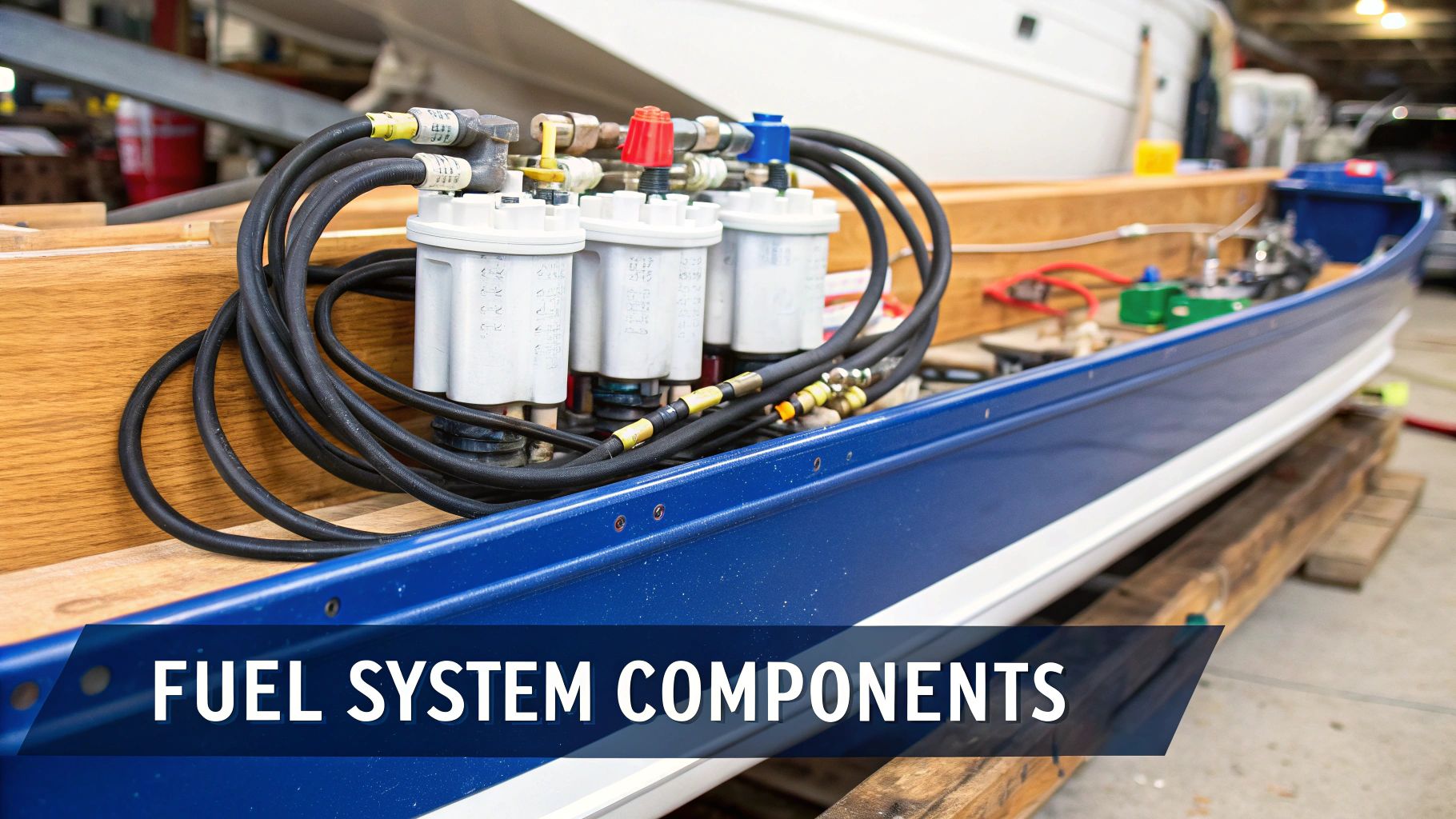
This detective-like approach is key to effective boat maintenance, helping you prevent expensive repairs and, more importantly, dangerous situations. Recognizing the earliest signs of trouble is a skill that separates prepared boaters from those who just hope for the best.
Fuel Quality vs. Mechanical Failure
When something goes wrong, the first step is to figure out if you're dealing with bad fuel or a failing part. The symptoms can look surprisingly similar, but the fixes are worlds apart.
-
Fuel Quality Issues: These problems usually pop up suddenly, often right after you've filled the tank. You might notice rough idling, stalling at low speeds, a sputtering engine, or a clear loss of power. If you think contaminated fuel is the culprit, check the clear bowl on your fuel-water separator. If you see water, gunk, or a milky-looking mixture, you've found your problem.
-
Mechanical Failures: These issues tend to build up over time. A failing fuel pump might start as a quiet whine that gets louder over several trips. A clogged filter will often cause a gradual loss of top-end speed before the engine starts running rough at all speeds. A cracked fuel line might give off a faint gasoline smell long before you see an actual leak. To learn more, you can also read these tips to diagnose and prevent common boat fuel problems.
Red Flags That Demand Immediate Action
Some symptoms give you time to get back to the dock and investigate, but others require you to shut down the engine right away. Knowing the difference is critical for your safety.
| Symptom | Potential Cause | Immediate Action |
|---|---|---|
| Strong Smell of Gasoline | Leaking fuel line, fitting, or tank. | Shut down all engines and electronics. Ventilate the area. |
| Engine Won't Start (No Sound) | Electrical issue (e.g., dead battery, faulty ignition). | Check battery connections and charge. |
| Engine Cranks but Won't Fire | Fuel starvation (clogged filter, empty tank, pump failure). | Check fuel level, primer bulb (if equipped), and filters. |
| Sudden, Severe Vibration | Fouled propeller or severe engine misfire. | Shut down immediately and inspect the propeller. |
| Engine Overheating Alarm | Cooling system failure or severe engine strain. | Shut down immediately to prevent catastrophic damage. |
The most urgent and dangerous warning sign is the smell of raw fuel. Unlike diesel, gasoline vapors are extremely explosive. If you catch this scent, your top priority is to cut off any potential ignition source. This means shutting down the engine, turning off all electrical systems at the battery switch, and opening hatches to air everything out. Only after the fire risk is gone should you try to find the leak. This level of awareness is what keeps everyone on board safe.
Choosing the Right Fuel for Peak Performance
Not all marine fuels are the same, and what you put in your tank has a direct impact on your engine’s health, performance, and the lifespan of the entire boat fuel system. Think of it like a diet for an athlete: poor nutrition leads to sluggish performance and long-term health problems. The same is true for your boat's engine. The right fuel choice ensures smooth operation and reliable starts, while the wrong one can lead to expensive repairs.
Gasoline vs. Diesel: What Matters Most
The first and most important choice is between gasoline and diesel, which is determined by your engine type. While both have their pros and cons, the main difference for a boater comes down to how they are handled and the specific problems they can introduce.
-
Gasoline: The majority of recreational boats run on gasoline, which is more volatile. The primary challenge with modern marine gasoline is ethanol. Commonly found at regular gas stations, ethanol is problematic because it attracts and absorbs water. This can cause phase separation, a condition where the water-ethanol mixture separates from the gasoline and sinks to the bottom of the tank. From there, it can be drawn into your engine, causing severe damage. It's always best to find ethanol-free gasoline, often sold as "rec fuel" or REC-90.
-
Diesel: Diesel is generally seen as a safer, more stable fuel. It's less flammable and offers more energy per gallon. However, it has its own set of issues. Diesel is vulnerable to microbial growth, commonly known as the "diesel bug." This is when bacteria and fungi thrive at the point where fuel and water meet, creating a sludge that clogs filters and can ruin fuel injectors. Using a quality biocide additive regularly is a must for any diesel-powered boat.
Additives: Hype vs. Help
The world of fuel additives is full of big promises, but some products offer genuine benefits. A good fuel stabilizer is essential, especially if your boat isn't used for more than a few weeks at a time. It stops the fuel from breaking down and creating gums and varnishes that can clog your boat fuel system. For diesel engines in colder regions, anti-gel additives are vital to stop the fuel from thickening into a wax-like substance.
The commercial shipping industry uses an even wider array of fuels, including high sulfur fuel oil (HSFO), liquefied natural gas (LNG), and new biofuels. This variety is a result of trying to meet strict environmental rules while keeping operations efficient. You can learn more about these global marine fuel trends on Knowledge Sourcing Intelligence. While you won't use these fuels on a recreational boat, it highlights how fuel choice is always a balance of performance and responsibility.
Maintenance Strategies That Actually Work
Proper boat fuel system maintenance isn't about following a strict, one-size-fits-all checklist. Instead, think of it as a smart, adaptable routine that matches how you actually use your boat. The time you invest now is a down payment on future reliability, better performance, and your own peace of mind. A forward-thinking approach keeps small, fixable issues from turning into trip-ending disasters.
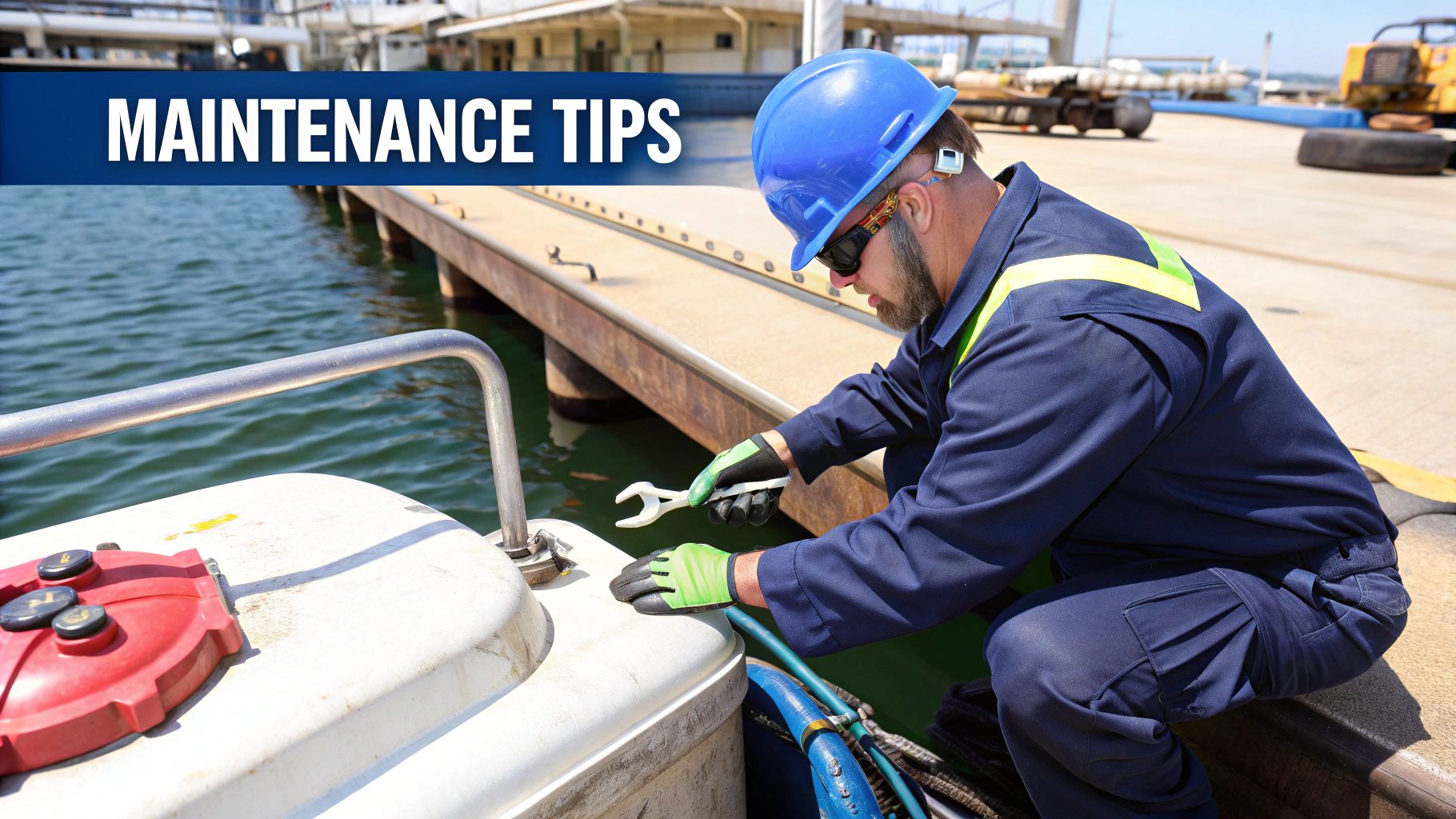
High-Impact Maintenance Routines
Not all maintenance tasks are created equal. Some give you a much better return on your time and effort. By focusing on these key areas, you'll tackle the most common failure points in any boat fuel system and dramatically improve its dependability.
Here’s a practical routine you can follow based on your boating habits:
- Before Every Trip (The Quick Check): This five-minute routine is your first line of defense. Glance at the fuel-water separator bowl to check for water or gunk. If you have a primer bulb, give it a squeeze to make sure it feels firm. A quick sniff for gas fumes around the engine and fuel tank areas is also a critical safety measure.
- Monthly (The Deeper Look): If you're out on the water often, a monthly inspection is a good idea. Check all fuel lines for any signs of cracking, brittleness, or soft spots. Make sure every hose clamp is tight and not corroding. Look closely at fuel filter housings for any tell-tale signs of leaks.
- Annually (The Full Service): Consider this a non-negotiable task. You should replace your fuel filters every year, no matter how many hours you’ve put on the engine. Old filters get clogged with debris or can break down from ethanol, choking off fuel flow. This is also the best time to give your fuel tank a thorough cleaning. For step-by-step guidance, you can explore our complete guide on boat fuel tank safety and maintenance.
Essential DIY Maintenance Tasks
Several key maintenance jobs are perfectly manageable for most boat owners. Learning to handle them yourself not only saves money but also builds your confidence on the water.
Fuel Filter and Separator Replacement
This is the most important regular maintenance task you can perform. A fresh filter ensures your engine receives a clean, steady supply of fuel.
- Place an oil-absorbent pad under the filter to catch any drips.
- Carefully unscrew the old filter canister or bowl.
- Apply a light coat of clean oil or grease to the new filter's gasket.
- Screw the new filter on, hand-tightening it based on the manufacturer's directions (this is usually a half to three-quarters of a turn after it makes contact).
- Prime the system with the primer bulb and double-check for any leaks.
Proper Long-Term Fuel Storage
If your boat will be sitting for more than a couple of months, how you store your fuel matters. Fuel degrades over time, creating gummy deposits that can clog up your entire system. Before storage, fill the tank to about 90% capacity to reduce the air space where condensation can form. Add a quality marine fuel stabilizer, following the product's instructions, then run the engine for 10-15 minutes to circulate the treated fuel everywhere it needs to go.
This proactive step is more important than ever. The worldwide demand for liquid fuels, including marine-grade ones, hit about 102.57 million barrels per day as of April 2025. This massive scale affects everything from the price to the chemical makeup of the fuel at the pump, making it crucial to protect your boat fuel system from breaking down. You can find more details on these global liquid fuel consumption trends on Statista.
Troubleshooting Like a Professional Mechanic
When your boat's engine sputters miles from shore, a wave of panic is understandable. But professional marine mechanics don’t panic or guess. They use a methodical process to zero in on the problem quickly and efficiently. You can adopt this same mindset to diagnose issues with confidence, saving yourself time, money, and a whole lot of stress.

A Step-by-Step Diagnostic Approach
The secret is to work from the simplest potential causes to the most complex. It’s easy to jump to conclusions and assume a major part like the fuel pump has failed, but more often than not, the culprit is much simpler. A clogged filter or an obstructed vent is a far more common issue. This logical sequence helps you isolate the problem without needlessly replacing perfectly good parts.
Start with these fundamental checks before reaching for any tools:
- Check the Obvious: Is there actually enough fuel in the tank? It sounds simple, but it happens. Also, ensure the emergency cutoff switch is in the 'run' position. Finally, check that the fuel tank vent is clear of obstructions like insect nests or salt buildup. A blocked vent creates a vacuum that can starve the engine of fuel.
- Inspect the Primer Bulb: For outboard motors, the primer bulb is a great diagnostic tool. Squeeze it. If it feels soft and won't firm up after a few pumps, you likely have an air leak somewhere between the bulb and the fuel tank. If it’s rock-hard and won't budge, you could have a blockage downstream, closer to the engine.
- Examine the Fuel-Water Separator: The clear bowl at the bottom of your separator is a window into your boat fuel system’s health. If you see water (which looks like distinct bubbles or a separate layer) or sludgy gunk, you’ve found a major clue. Draining the bowl might get you running again temporarily, but contamination means a bigger problem needs to be addressed.
- Listen Carefully: An electric fuel pump should make a faint humming or whirring sound for a couple of seconds when you turn the key to the 'on' position (before starting the engine). If you hear silence, the pump may have failed or there could be an electrical problem, like a blown fuse or a bad connection.
From Symptoms to Solutions
Learning to interpret your engine's symptoms is a crucial skill. Just like a detective connecting clues to a suspect, you can use a troubleshooting matrix to link what you're seeing and hearing to a list of potential causes. For instance, if your engine runs fine at idle but sputters and dies when you push the throttle past 3,000 RPM, that almost always points to a fuel delivery problem, likely a clogged filter that can't keep up with demand.
To help you connect the dots, we’ve put together a comprehensive troubleshooting guide. This table matches common symptoms to their likely causes, quick checks you can perform, and the probable solutions.
Fuel System Troubleshooting Matrix
A comprehensive troubleshooting guide matching common symptoms to potential causes and recommended solutions.
| Symptom | Possible Causes | Quick Checks | Likely Solution | Professional Help Needed |
|---|---|---|---|---|
| Engine won't start | No fuel, air in the line, clogged vent, electrical issue | Check fuel gauge, squeeze primer bulb until firm, inspect vent opening, listen for fuel pump hum | Refuel, prime the engine, clear vent obstruction, check fuses/relays | If pump is silent or issue persists |
| Engine sputters at high RPM | Clogged fuel filter, weak fuel pump, fuel line restriction | Inspect fuel-water separator, check primer bulb hardness | Replace primary and secondary fuel filters | If filters are clean, pump may need testing/replacement |
| Engine runs rough or stalls | Water or debris in fuel, fouled spark plugs, vacuum leak | Drain and inspect fuel-water separator bowl | Replace fuel filters, drain and treat contaminated fuel | If symptoms continue after fresh fuel and filters |
| Noticeable fuel smell | Leaking fuel line, cracked fitting, loose hose clamp | Visually inspect all fuel lines and connections from tank to engine | Tighten clamps, replace cracked lines or fittings immediately | For leaks that are hard to locate or are near hot engine parts |
| Primer bulb won't get hard | Air leak in the fuel line, loose fitting, bad check valve in bulb | Check all connections between tank and bulb, inspect bulb itself | Tighten all hose clamps, replace primer bulb if faulty | If leak source cannot be found |
By following this structured approach, you can diagnose your boat fuel system more effectively. This not only helps you fix minor issues yourself but also allows you to provide a mechanic with precise information if professional help is needed, ultimately getting you back on the water faster.
Modern Fuel Management Technology and Future Trends
The way we look after a boat fuel system is changing. We're moving away from simply reacting to problems and toward a smarter, data-first approach. Technology that once felt like something from a sci-fi movie is now readily available, giving boat owners an unprecedented window into how their vessel is running. With advanced monitoring systems delivering real-time data, our whole understanding of boat maintenance is being upgraded. This isn't just about adding cool gadgets; it's about making boating safer, more efficient, and ultimately, more affordable.
Think of these modern systems as a personal financial advisor for your fuel tank. They can predict when you’ll need maintenance, give you a detailed breakdown of your fuel burn, and connect with other electronics on your boat for a complete picture of its health. This level of insight helps you sidestep unexpected breakdowns and fine-tune performance in a way that old-school gauges never could.
The Rise of Smart Fuel Optimization
The idea of actively managing fuel consumption is no longer just for big commercial ships. Recreational boaters are catching on to the real value that comes from upgrading their fuel systems. This is part of a bigger shift in the marine world. Marine fuel optimization is a fast-growing market, showing a collective push for better energy efficiency, lower costs, and reduced emissions. In fact, between 2024 and 2025, the market for these technologies is expected to grow from $12.01 billion to $13.75 billion—an impressive 14.5% increase. You can discover more insights about marine fuel optimization trends here. This rapid growth proves that boaters everywhere are looking for smarter solutions.
Looking Ahead: Future-Proofing Your System
As technology advances, so do the expectations for a modern boat fuel system. Keeping up with new developments helps you make smart upgrade choices that will serve you well for years to come. If you're considering a new setup, our boat fuel management system guide can offer more detailed information. Here are a few key trends shaping the future:
- Hybrid Propulsion Integration: With hybrid and electric boats becoming more popular, fuel management systems will have to keep pace. Future systems won't just track gasoline or diesel; they'll manage both liquid fuel and battery levels, switching between them to maximize efficiency.
- Smart Filtration: Picture a fuel filter that alerts you before it gets clogged and causes engine trouble. Smart filters equipped with sensors will provide real-time updates on their condition, taking the guesswork out of maintenance and preventing fuel flow issues.
- Advanced Sensor Networks: We're moving beyond simple tank gauges. The future lies in a network of sensors that can monitor fuel quality, instantly detect water contamination, and even spot potential leaks before they turn into serious hazards.
Investing in a modern boat fuel system upgrade is more than a matter of convenience—it's about choosing a safer, more sustainable, and more enjoyable way to be on the water.
A key part of bringing your fueling process into the modern era is to stop spills and guesswork at the dock. The CLiX Fueling Solutions system provides a straightforward, effective way to prevent messy and expensive overfills, which protects both your boat and the marine environment. Discover how CLiX can bring spill-free confidence to your fueling routine at clixfueling.com.

